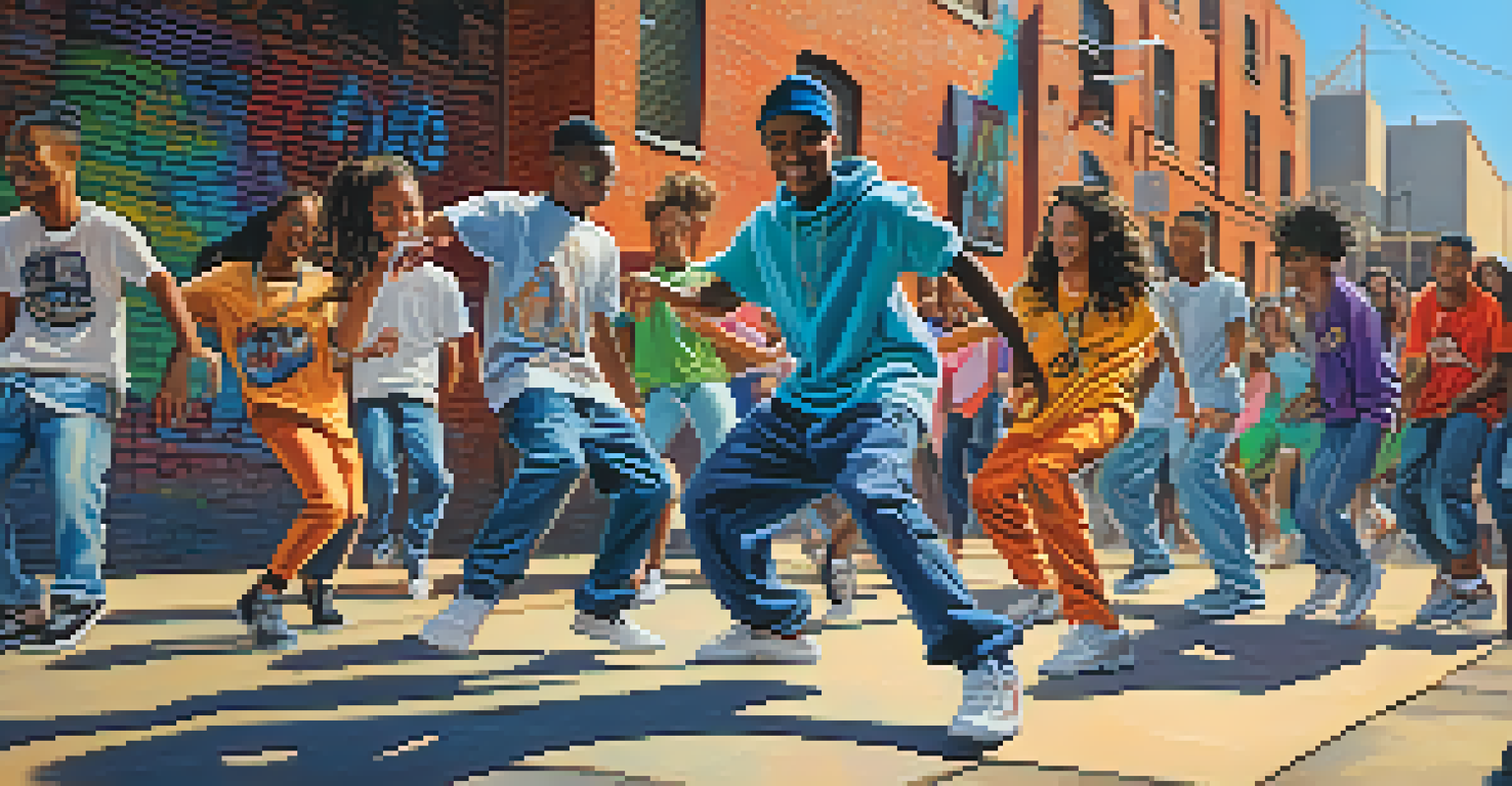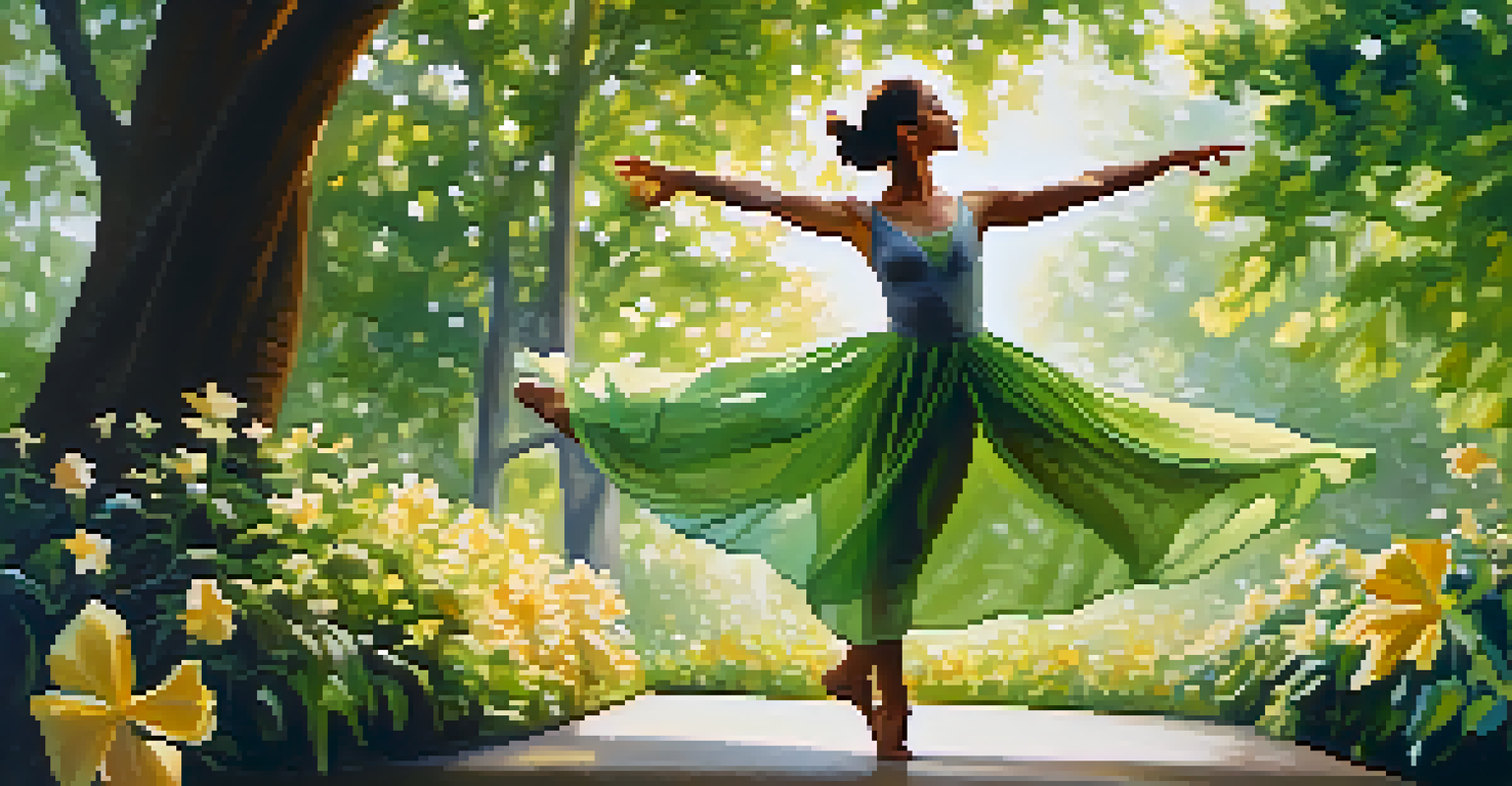Understanding Different Dance Styles in Education Curricula

The Importance of Dance in Educational Settings
Dance plays a crucial role in education, offering students a unique way to express themselves. It fosters creativity, enhances physical fitness, and improves mental well-being. By integrating dance into curricula, schools can provide a holistic approach to learning that promotes both cognitive and emotional development.
Dance is the hidden language of the soul.
Moreover, dance encourages teamwork and social interaction, helping students build essential life skills. Through group performances and collaborations, students learn the value of communication and cooperation. This not only enriches their educational experience but also prepares them for future challenges in both personal and professional realms.
Lastly, dance education can spark interest in cultural diversity. By exploring various dance styles from around the world, students gain appreciation for different traditions and histories. This cultural awareness is vital in today’s global society, promoting inclusivity and understanding among students.
Ballet: The Foundation of Dance Education
Ballet is often considered the cornerstone of dance education. Its emphasis on technique, discipline, and form provides a solid foundation for dancers of all styles. Students who study ballet develop strength, flexibility, and coordination, which are essential skills for any dancer.

Incorporating ballet into curricula also teaches students about artistry and performance. They learn to express emotions and tell stories through movement, enhancing their creativity. This artistic expression can be incredibly empowering, giving students a voice through their bodies.
Dance Enhances Education Holistically
Integrating dance into curricula fosters creativity, physical fitness, and emotional development in students.
Furthermore, ballet promotes a strong work ethic. The rigorous training and commitment required to master ballet instill a sense of perseverance in students. This dedication often translates to other areas of their lives, fostering a mindset geared toward achieving goals and overcoming obstacles.
Hip Hop: A Modern Approach to Dance Education
Hip hop dance has gained immense popularity in recent years, making it a vibrant addition to educational curricula. Its energetic and expressive nature appeals to many students, encouraging them to participate and engage with dance. This style allows for individual creativity, as students can incorporate their own moves and personal flair.
Dance is the joy of movement and the heart of life.
In addition to its fun factor, hip hop teaches valuable skills such as rhythm, coordination, and improvisation. These skills not only enhance dance ability but also contribute to overall physical fitness. Engaging in hip hop can lead to improved cardiovascular health and body awareness.
Moreover, hip hop often addresses relevant social issues, providing a platform for students to express their thoughts and feelings. This connection to contemporary culture fosters critical thinking and encourages students to explore themes such as identity and community. As a result, hip hop becomes more than just a dance style; it becomes a medium for self-expression and social commentary.
Contemporary Dance: Blending Techniques and Expression
Contemporary dance is known for its versatility and ability to blend various styles. It encourages dancers to experiment with movement, making it an ideal choice for educational settings. Students can draw from ballet, jazz, and even hip hop, allowing for a rich exploration of movement vocabulary.
This dance style emphasizes personal expression and creativity, encouraging students to connect with their emotions. By exploring contemporary dance, students learn to interpret music and convey feelings through movement. This artistic exploration can lead to greater self-awareness and confidence.
Cultural Dance Promotes Inclusivity
Cultural dance styles help students appreciate diversity and connect with their heritage, creating a more inclusive environment.
Additionally, contemporary dance often incorporates storytelling elements. Students are challenged to create narratives through their choreography, enhancing their understanding of composition and structure. This skill not only applies to dance but can also enrich their approach to other art forms, such as theater and writing.
Cultural Dance: Celebrating Diversity in Education
Cultural dance styles are essential in showcasing the rich tapestry of global traditions. Integrating these dances into education helps students appreciate cultural diversity and fosters respect for different backgrounds. By participating in cultural dance, students learn about history and customs, creating a more inclusive learning environment.
Moreover, cultural dance can serve as a bridge to connect students with their heritage. For many, it offers a way to explore their roots and strengthen their identity. This connection can be particularly empowering, promoting a sense of pride and belonging among students.
Incorporating cultural dance into curricula also encourages collaboration and community engagement. Schools can host events that celebrate various cultures, inviting families and community members to participate. This not only enriches the educational experience but also builds stronger community ties.
Jazz Dance: A Dynamic and Expressive Style
Jazz dance, with its lively rhythms and improvisational elements, adds a dynamic flair to educational curricula. This style encourages students to express themselves freely, fostering creativity and spontaneity. Jazz dance also promotes physical fitness, helping students develop strength and coordination.
Students learn to connect with music in unique ways through jazz dance, exploring rhythm and timing. This rhythmic awareness can enhance their overall musicality, benefiting them in other artistic endeavors. Additionally, jazz dance often incorporates storytelling, allowing students to convey emotions through movement.
Variety in Dance Builds Versatility
Exposing students to multiple dance styles enhances their adaptability and fosters a lifelong passion for the art form.
The communal aspect of jazz dance is another significant benefit. Group classes and performances foster teamwork and camaraderie among students. This sense of belonging can enhance their overall school experience, making dance a fun and engaging part of their education.
Tap Dance: Rhythm and Coordination in Motion
Tap dance is a unique style that emphasizes rhythm and coordination through footwork. Integrating tap into educational curricula offers students a chance to explore musicality in a fun and engaging way. The sound of tap shoes creates a dynamic auditory experience, making it an exciting form of expression.
Through tap dance, students develop a heightened sense of rhythm and timing. This skill not only enhances their dancing abilities but also translates into improved coordination in other physical activities. The focus on rhythm can also boost musical skills, making students more attuned to patterns and beats.

Moreover, tap dance encourages creativity and improvisation. Students can experiment with different rhythms and styles, allowing for personal expression. This freedom fosters a sense of confidence, as students learn to trust their instincts and embrace their unique movements.
Integrating Dance Styles for a Well-Rounded Education
To create a comprehensive dance education program, it's essential to integrate various styles. This approach exposes students to a wide range of techniques and expressions, enriching their overall learning experience. By exploring multiple dance forms, students can discover their preferences and strengths.
Additionally, integrating different styles promotes adaptability. Students learn to switch between techniques, enhancing their versatility as dancers. This adaptability is crucial in today's diverse dance landscape, where cross-genre collaborations are increasingly common.
Finally, a well-rounded dance education fosters a lifelong appreciation for the art form. Students who experience various styles are more likely to continue dancing beyond the classroom. This passion can lead to personal growth, community involvement, and even career opportunities in the arts.